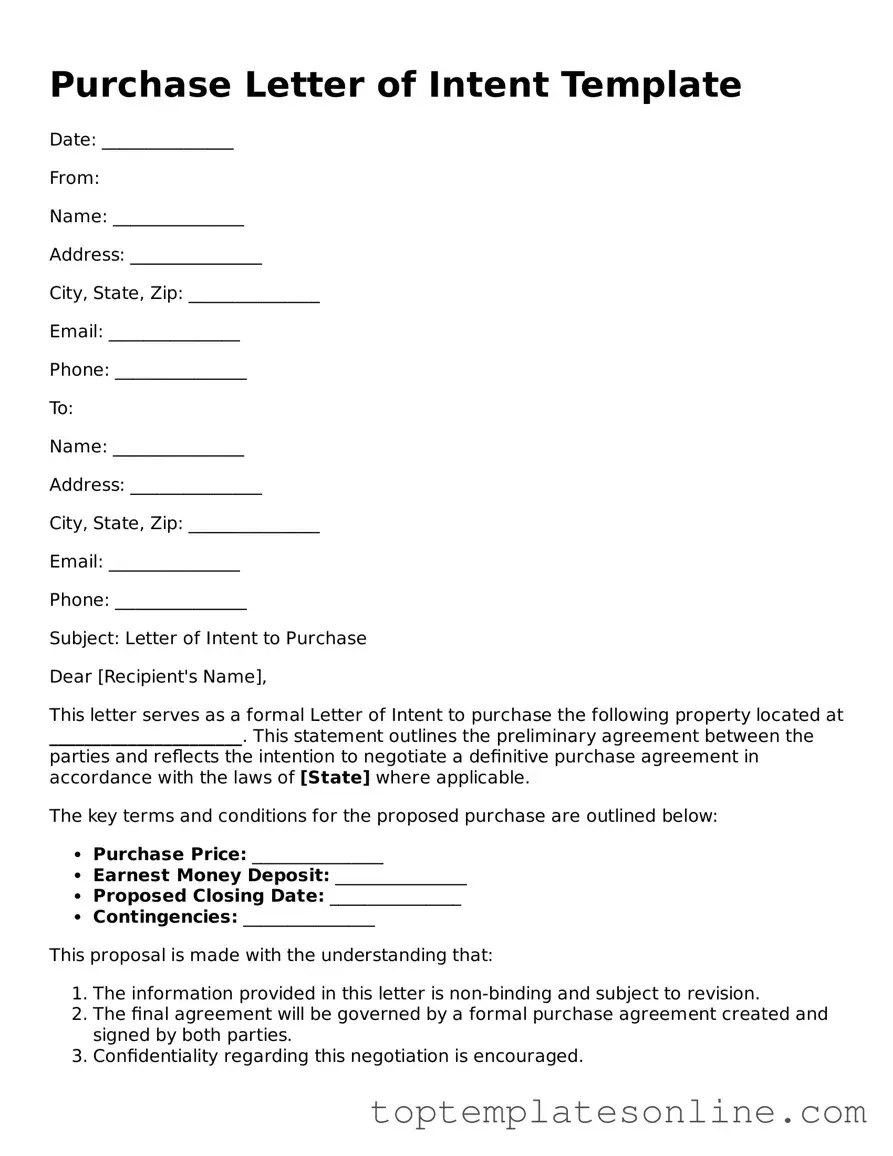Attorney-Approved Purchase Letter of Intent Form
A Purchase Letter of Intent (LOI) is a document that outlines the preliminary agreement between a buyer and a seller regarding the terms of a potential purchase. It serves as a roadmap for negotiations, detailing the key points that both parties agree upon before finalizing the deal. This form is essential for establishing a mutual understanding and setting the stage for a successful transaction.
Customize Purchase Letter of Intent Here
